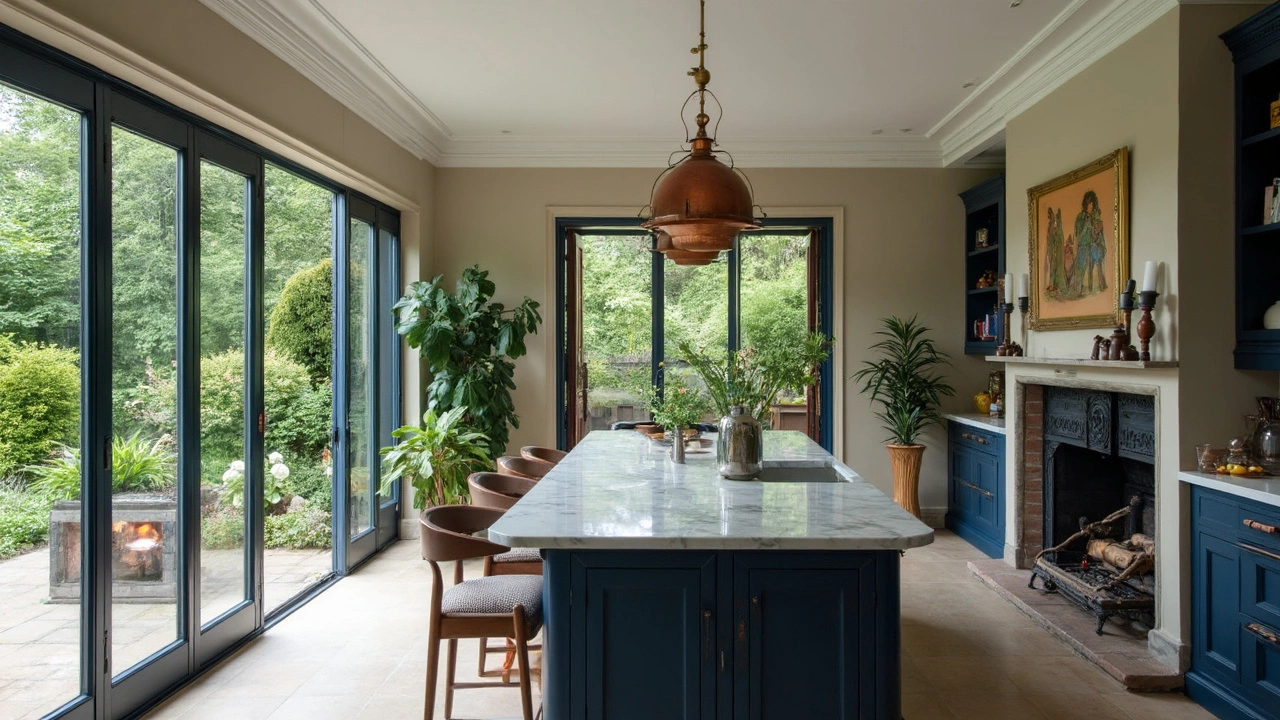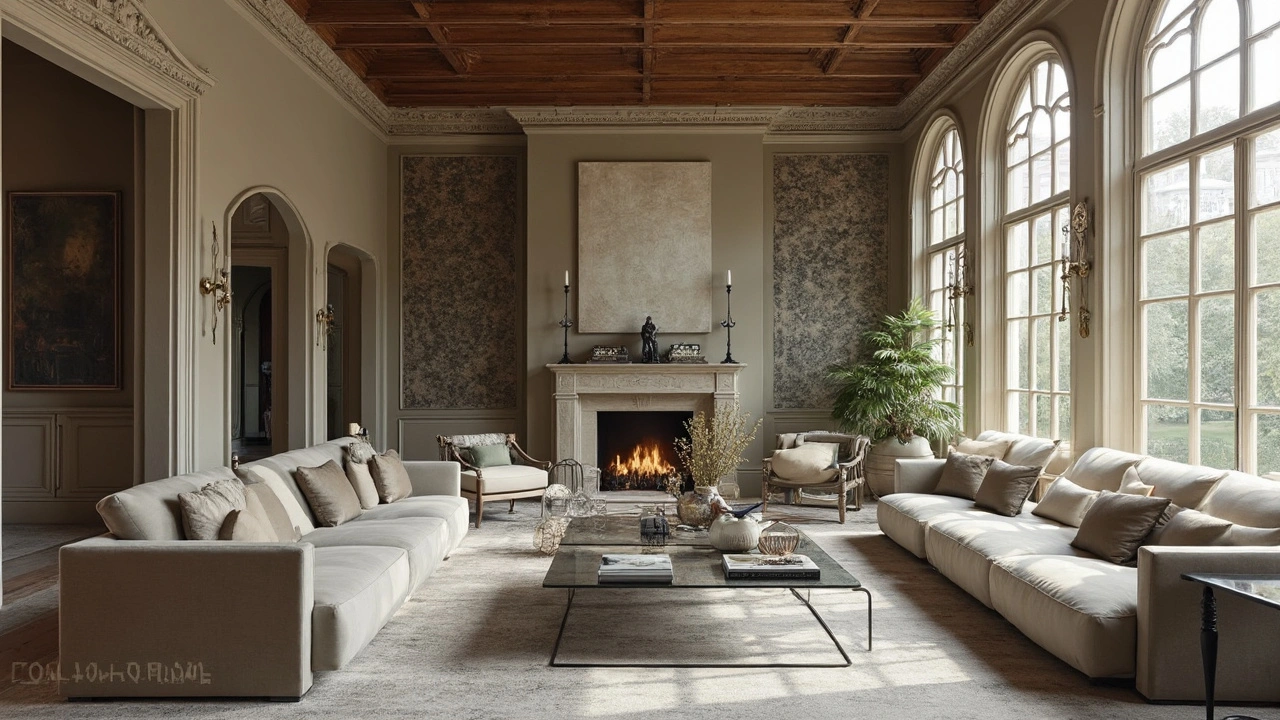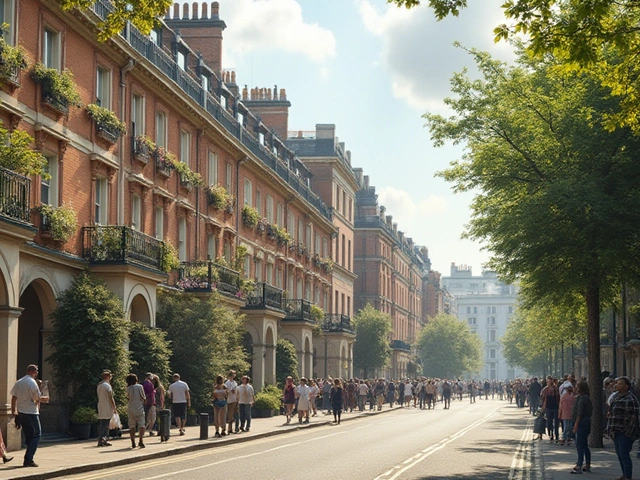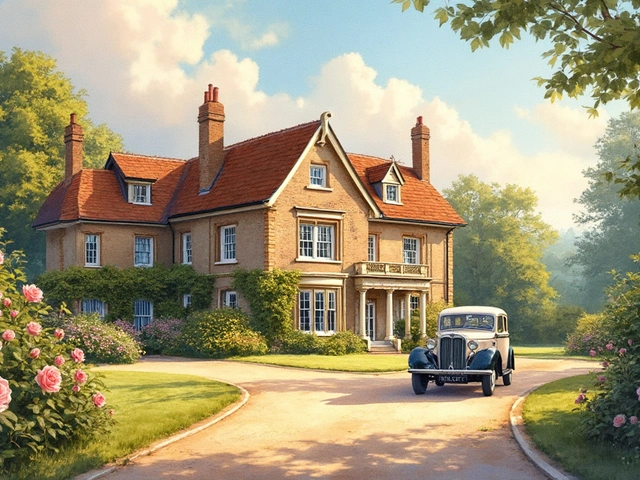Colonial architecture isn’t just for stuffy historic towns or your grandma’s favorite B&B. These homes have solid bones, classic layouts, and a timeless look that’s still winning hearts—if you know how to make it work in a modern space. The trick is blending old-school charm with current comforts so you get something cozy without all the fuss.
I’ll tell you straight—there’s no need to go all-out and blow your budget on hand-carved banisters or imported bricks. A few smart moves like adding panel molding, keeping the floor plan open, or smashing down a wall in just the right spot can work wonders. Hinges, door shapes, and window details all play a role—for real, the details matter—but you can pick and choose what feels right for you. Colonial design was never about trends; it’s about getting the proportions and balance spot on.
If you want proof that colonial and modern can mix, just look at all the designers playing with mixed trims, wide-plank floors, or bold-black window muntins. Start small and don’t get nervous about making mistakes—it’s your space, so you should love it.
- What Makes Colonial Architecture Special
- Practical Ways To Blend Colonial and Modern Styles
- Choosing the Right Materials and Colors
- Finishing Touches: Trim, Hardware, and Furnishings
What Makes Colonial Architecture Special
When people talk about colonial architecture, they’re usually describing a style that’s stood the test of time in both the US and around the world. Think balanced shapes, strong brick or wood, tall windows with shutters, and those old front doors that practically demand you knock. Colonial homes first started popping up in the 1600s when European settlers built their versions of home across New England and the southern states. You’ll still see their influence in everything from city neighborhoods to rural farmhouses.
Here’s the cool part: colonial architecture isn’t just one type—it’s more like a family tree. You’ve got the basic British Colonial, but there’s also Dutch Colonial with those famous gambrel roofs and Spanish Colonial with stucco walls and red tile roofing. But they all share a few things:
- Symmetry—windows and doors line up and usually mirror across the center.
- Central fireplaces—a must-have for those cold colonial winters.
- Classical details—crown molding, columns, and sometimes those arched entryways.
- Simple, boxy footprint—easy to expand as your family (or your stuff) grows.
Colonial homes have survived for centuries for one major reason: they get the basics right. Rooms are separated by function, the flow is practical, and everything’s built to last. Most Americans still see colonial houses as "classic" and welcoming—even if fewer of us are lighting fires in the hearth every night.
"The continued popularity of colonial homes rests on their sturdy construction and timeless style—elements that work just as well now as they did three hundred years ago." — Richard Guy Wilson, architectural historian
Just to give a sense of how much folks love this look, the National Association of Home Builders found that more than 20% of new home designs in the US still pull inspiration from colonial architecture—that’s a lot of folks chasing those symmetrical lines and simple layouts. Bottom line: this style has never gone out of fashion. If you’re into modern home design but want character, colonial’s a solid bet.
Practical Ways To Blend Colonial and Modern Styles
Want that sweet spot between classic colonial architecture and trendy modern home design? Good news: you don’t have to pick sides. You can blend these looks and get the best of both worlds without a major headache. The secret is knowing what to keep and where to flex some modern improvements.
- Open Up the Floor Plan (But Not Too Much): Old colonial homes were built with compartmentalized rooms. Today, knocking down a few non-structural walls can give you that airy, modern vibe, but keep some definition between spaces using stylish glass French doors or wide archways.
- Keep the Symmetry: The signature of colonial design is balance. Keep windows, doors, and cabinets lined up. It’s amazing how much symmetry can calm down even the busiest modern interior.
- Mix Old-School Details With Modern Surfaces: You can keep the colonial crown molding, wainscoting, or dental trim, but pair it with sleek finishes—like quartz countertops, simple cabinetry, or matte hardware, instead of ornate brass.
- Windows Matter: Colonial houses are famous for their double-hung windows with square panes. Upgrade to energy-efficient versions, but keep the grid look on the front of the house for instant curb appeal—and lots of natural light inside.
- Lighting Choices: Swap dated chandeliers for clean-lined pendants or recessed lights, but throw in a statement lantern over the entryway or in the dining room to keep some old-school soul.
Don't forget, colonial architecture plays well with modern color schemes. White or cream walls work as a classic backdrop, and you can go bold with accent walls or even paint your trim a shocking black—it’s a look that’s trending hard on Instagram right now.
| Feature | Colonial Style | Modern Twist |
|---|---|---|
| Fireplace Mantels | Detailed, classic | Slimmed-down stone or slab styles |
| Entryways | Grand front porch | Sleek glass front doors |
| Stair Railings | Wood, turned balusters | Metal spindles or floating steps |
Remember, it’s about picking the bones of what you love in colonial architecture while keeping things comfortable and practical—like a brand new kitchen but with classic box-beam ceilings. Don’t be afraid to mix it up until you get a space that actually fits your life. That’s when old meets new, and it actually works.

Choosing the Right Materials and Colors
The secret sauce for nailing that blend of colonial architecture and modern home design is all in the details—what your home is actually made of and the paint or stain you slap on top. Colonial homes were known for honest materials: think brick, wood, stone, and simple plaster. But that doesn’t mean you need a house full of heavy beams and creaky floorboards to get the vibe right. Smart choices, mixed textures, and a confident color palette can transform even a basic room.
Let’s talk walls and floors first. Original colonials rocked real wood floors—usually wide planks in oak or pine, sometimes even showing knots or nail holes. Today, you can bring that look in with engineered hardwoods or even luxury vinyl planks if you’re trying to save cash and want something tough (especially if you've got pets like my Dalmatian, Picasso, running wild). For walls, paneling or shiplap on one area—like a living room or entry—grounds the space without going overboard.
Color is where you can quietly up the wow factor. Classic colonial houses went for muted, natural paints: deep navy, cream, soft gray, forest green, and, a little later, punchy reds or mustard yellow. These still hold up, especially when you balance them out with clean, light modern finishes. You don’t need a full house of dark paneling—just an accent wall or cabinetry can do the job.
- Brick or stone for fireplaces and accent walls—keep the texture visible for a more authentic feel.
- Matte or eggshell paint over shiny. Colonial surfaces were rarely glossy.
- Solid wood cabinets and trim, or at least choose a wood-look alternative in maple or cherry tones.
- Fiberglass windows or doors painted black for a sharp, updated contrast that works in both colonial and modern settings.
Want to geek out on a color cheat sheet? Here’s a quick sample of timeless colonial colors paired with sleek modern counterparts:
| Colonial Favorite | Modern Pair |
|---|---|
| Williamsburg Blue | Pale Gray |
| Historic Taupe | Matte White |
| Barn Red | Charcoal |
| Buttermilk Cream | Rich Black |
| Hunter Green | Warm Linen |
Don’t overthink it. Keep natural textures in high-touch areas, and lean on two or three main paint colors for a vibe that’s both cozy and up-to-date. Mix in a dash of the unexpected—like a bold colonial color on the laundry room cabinets—if you want to surprise your guests or just make your place feel a bit more personal.
Finishing Touches: Trim, Hardware, and Furnishings
This is where your modern space really takes on that colonial architecture vibe—without ending up stuck in the past. It’s all about details here, especially when you pick out trim, hardware, and furniture. Most older colonial homes kept it classic with thick crown molding, chunky baseboards, and door frames that made a statement. You don’t need fancy patterns—just clean lines and solid proportions.
If you want that colonial look on a budget, swap out dinky window and door trims for beefier wood pieces. Painted white or off-white, they make your walls look sharp. Don’t forget paneled wainscoting in entryways, dining rooms, or halls—it’s simple to install and gives a room an instant throwback feel. Even a little beadboard in a mudroom goes a long way.
Hardware matters way more than people think. Go for simple, hefty door knobs and latches in classic finishes like aged brass, blackened bronze, or even matte black. Skip shiny, modern chrome—the idea is to choose materials that feel like they’ve got history. If you want to be nerdy about it like me, early colonial homes often used forged iron or brass because they were out of reach for most folks, but now, those details can be the affordable “wow” moments in a modern home.
Let’s talk furniture. Real colonial style favors wood—lots of it. But you don’t have to live in an oak forest. Blend a few solid-wood pieces (think simple, straight lines rather than fancy carvings) with comfy, modern seating. Place a Windsor chair by the entry table, add a chunky farm-style dining table, or throw a wooden bench at the foot of your bed. You get that modern home design feeling with familiar, cozy touches.
Colonial-inspired light fixtures are easy to find today, too. Lantern-style pendants and sconces in black or brass feel right at home but won’t clash with your smart bulbs or modern dimmers.
- Choose trim that’s 3.5 inches wide or more for a bold look.
- Go for hardware in matte or aged finishes, avoiding slick modern chrome.
- Mix one or two old-school wood furniture pieces with soft, streamlined modern sofas or chairs.
- Use lantern pendants or candelabra-style chandeliers for classic colonial flavor.
Fun fact—according to a 2023 Houzz survey, homes mixing classic and modern trim details topped the list for resale value in traditional neighborhoods. So, these finishing touches aren’t just nice to look at; they’re a smart investment if you ever think about moving.





